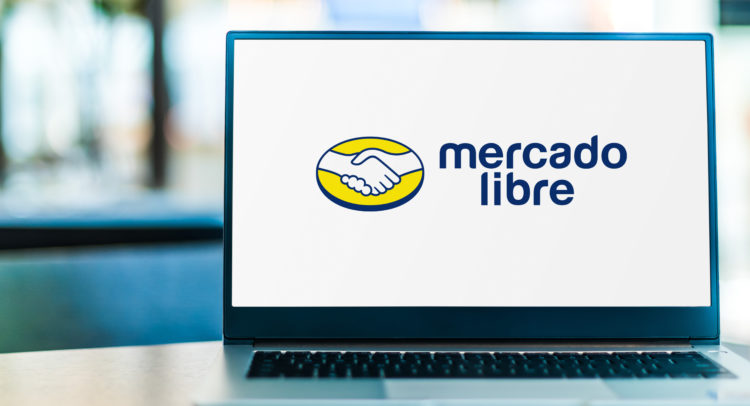MercadoLibre (MELI) functions as the most prominent e-commerce and payment ecosystem in Latin America in terms of unique visitors and page views by providing a suite of comprehensive technology solutions across the entire value chain of commerce.
The company has a vigorous footprint in 18 countries, including Brazil, Mexico, Chile, Peru, and Argentina, enabling commerce through its marketplace platform in most of Latin America. Some of the company’s other services comprise fintech solutions, e-store setup, loan financing, and advertising.
I remain bullish on the stock.
MercadoLibre Has Grown Substantially, but There are Some Risks
MercadoLibre’s revenues grew from $298.9 million in Fiscal 2011 to $7.07 billion last year, implying a 10-year CAGR of 37.2%. With Latin America featuring a population of 650 million people and one of the fastest-growing Internet penetration rates globally, MELI has managed to expand at an explosive pace over the past decade. Accordingly, shares underwent an equally-explosive run during this period.

Due to its similar operations and ever-expanding e-commerce revenues, MercadoLibre is often regarded among investors as the Amazon (AMZN) of Latin America. The American e-commerce giant went through a similar journey during its explosive growth phase over the decade that led to the COVID-19 pandemic, hence the strong resemblance.
Similar to many other stocks, MELI has plummeted year-to-date. In fact, shares are currently trading around 66% lower from their 52-week highs of roughly $1,970.
This has been the result of elevated risks. For instance, similar to the U.S., inflation in Latin America has been surging lately, which could threaten consumers’ purchasing power, thus, hurting the company’s growth prospects.
Further, with all of the company’s revenues being sourced outside of the U.S., investors have been nervous over geopolitical and FX risks, which has added extra pressure to MercadoLibre’s investment case.
That said, the company’s performance has remained rather robust, with MercadoLibre’s profitability prospects improving quite substantially.
Strong Recent Performance, Long-Term Growth Catalysts
MercadoLibre’s Q1-2022 results exhibited exceptional growth in the company’s financials, with Gross Merchandise Value growing 31.6% on an FX-neutral basis to $7.7 billion.
Items sold surpassed 267 million on the platform, contributing to the company recording $2.2 billion in net revenue during the quarter, a 67.4% surge year-over-year on an FX-neutral basis. It’s quite fair to say, therefore, that MercadoLibre’s growth remains particularly strong despite last year’s inflated results due to the pandemic.
Regarding the company’s Fintech business, Total Payments Volume (TPV) advanced 81.2% year-over-year to $25.3 billion, while credit originations reached $2.4 billion, up from $1.7 billion at the end of last year (i.e., sequentially).
The steep increase was primarily powered by an increase in personal loans on the Mercado Pago app and the ongoing ramping up of the company’s credit card offering. During Q1, MercadoLibre also launched its first-ever credit operation in Chile with a merchant loan book.
MercadoLibre’s growth metrics are undoubtedly remarkable, especially regarding the company’s payment solution segment. What I am particularly keen on when it comes to the company’s payment solutions is that they are not necessarily limited within MercadoLibre’s ecosystem.
In fact, in Q1, about 68% ($17.3 billion out of $25.3 billion) of TPV occurred outside of the company’s commerce platform. Thus, the segment’s growth prospects are not confined to MercadoLibre’s standalone growth.
This is quite significant, as fintech solutions should continue to see massive growth in Latin America moving forward since a large chunk of the population remains unbanked.
Specifically, approximately 10% of the adult population in Brazil does not have a bank account. In Argentina, the situation is even more extreme, with around 51% of all adults remaining unbanked.
Accordingly, there is an extremely large untapped market for MercadoLibre to explore and take advantage of. Thus, it should not be surprising to keep seeing continued strong numbers in the company’s future earnings reports.
Furthermore, in line with the company’s Fintech ecosystem developing over time, MercadoLibre should manage to achieve synergies with its customers’ investment accounts. This could present another growth avenue for the company, as MercadoLibre now counts nearly 23 million customers in its asset-management product.
Finally, MercadoLibre’s ever-lasting expansion has resulted in strong economies of scale kicking in over time, leading to improved margins and enhanced profitability. For example, driven by operating leverage in shipping and efficiencies in collection fees, MercadoLibre’s Q1 gross margins expanded from 42.9% to 47.7% year-over-year.
Wall Street’s Take
Turning to Wall Street, MercadoLibre has a Strong Buy consensus rating based on 12 Buys and one Hold assigned in the past three months. At $1,385.38, the average MercadoLibre stock forecast implies 109.92% upside potential.

Takeaway – Why MELI Stock is Attractive
MercadoLibre shares have been squashed over the past several months amid intensified risks driven by an uncertain macroeconomic environment. Nonetheless, the company’s growth trajectory and future expansion avenues remain pretty potent.
Additionally, the current forward EV/EBITDA multiple of 34.3 is one of the humblest the stock has traded at over the past five years. Combined with improving profitability potential following scaling economics, MercadoLibre’s investment case appears to have become increasingly attractive lately.
Still, investors should keep the underlying risks in mind, including rampant inflation and geopolitical/FX dangers.









